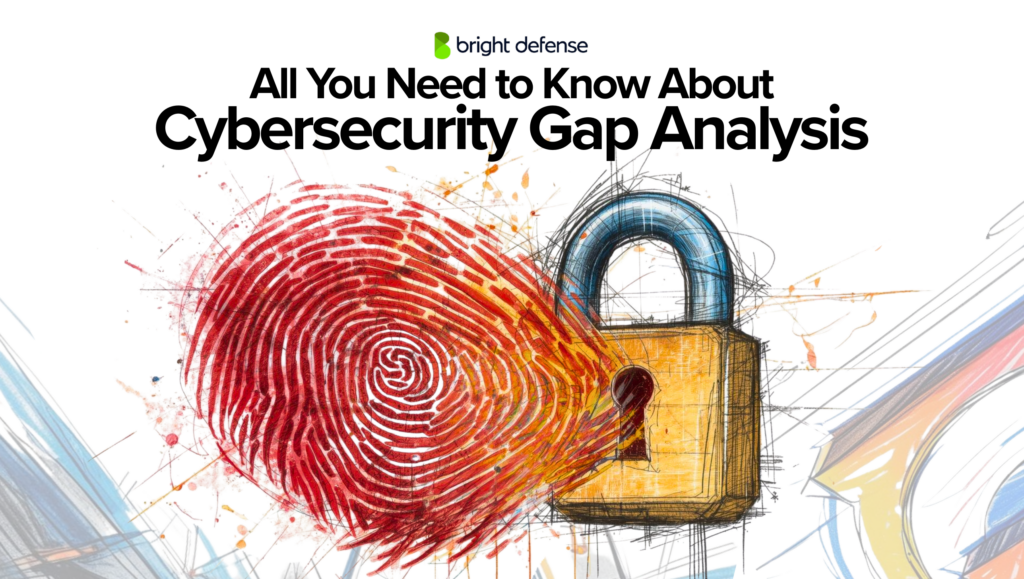
ISO 42001: The New Compliance Standard for AI Management Systems
Introduction
In the rapidly evolving landscape of artificial intelligence (AI), ensuring AI systems’ are used ethically and responsibly is a critical priority. The introduction of ISO 42001 marks a significant milestone in this endeavor. This new standard is designed to guide the management of AI systems. It emphasizes key aspects such as security, privacy, transparency, and fairness, offering a structured framework for organizations to follow.
ISO 42001 aims to bridge the gap between innovation and responsibility, providing guidelines to manage AI-related risks effectively. By adopting ISO 42001, organizations can enhance their compliance posture, build trust among stakeholders, and ensure that their AI applications align with global standards of ethical practice.
In this blog post, we will explore the essential components of ISO 42001, including its structure, key features, and benefits. Whether your organization is already using AI or planning to implement it, understanding ISO 42001 is crucial for navigating the complexities of AI governance and compliance.

What is ISO 42001?
ISO 42001 is a newly developed standard for managing artificial intelligence (AI) systems. It provides a comprehensive framework for organizations to ensure AI’s ethical, secure, and effective use. This standard outlines the requirements for establishing, implementing, maintaining, and continually improving an artificial intelligence management system (AIMS). This helps organizations address AI-related risks and integrate AI governance into their overall management processes.
ISO 42001 applies to any organization, regardless of size or sector, that utilizes AI systems. It emphasizes the importance of managing AI responsibly. This ensures that AI applications are transparent, fair, and compliant with relevant legal and regulatory requirements.
Background and Development of the Standard
The development of ISO/IEC 42001 was driven by the increasing integration of AI in various industries and the need for a standardized approach to managing AI risks. Recognizing the unique challenges posed by AI, the International Organization for Standardization (ISO) initiated the creation of this standard to provide organizations with a robust framework for AI governance.
The drafting of ISO/IEC 42001 involved collaboration among experts from diverse fields, including information security, privacy, quality management, and AI ethics. This multidisciplinary approach ensured that the standard addressed AI’s multifaceted nature and impact on society.
Comparison with Other ISO Standards
ISO 42001 is designed to integrate seamlessly with other ISO management system standards (MSS). Key standards for comparison include:
- ISO 27001: Focuses on information security management systems (ISMS). ISO 27001 provides a framework for managing sensitive company information to ensure its confidentiality, integrity, and availability. ISO 42001 complements ISO 27001 by addressing specific AI-related risks and ensuring that AI systems do not compromise information security.
- ISO 9001: Pertains to quality management systems (QMS). ISO 9001 sets out criteria for a quality management system and is based on principles such as strong customer focus, involvement of top management, and continuous improvement. ISO 42001 aligns with ISO 9001 by emphasizing quality and continuous improvement in developing and deploying AI systems.
- ISO 27701: Relates to privacy information management systems (PIMS). This standard provides guidelines for managing personal data and ensuring privacy. ISO 42001 integrates with ISO 27701 by addressing privacy concerns specific to AI, such as handling large datasets and automated decision-making.

Key Features of ISO 42001
Risk-Based Approach to AI Management
One of the fundamental principles of ISO 42001 is its risk-based approach, which includes a comprehensive risk assessment. The standard requires organizations to identify, assess, and mitigate risks associated with AI systems. This approach ensures that AI-related risks are managed proactively and systematically, minimizing potential negative impacts on individuals, organizations, and society. The risk-based methodology involves continuous monitoring and review to adapt to evolving AI technologies and emerging threats.
Integration with Other Management System Standards (MSS)
ISO 42001 is designed to be compatible with other MSS, facilitating its integration into existing management frameworks. This compatibility allows organizations to leverage their existing processes and controls while addressing the unique challenges posed by AI. By harmonizing with standards like ISO 27001, ISO 9001, and ISO 27701, ISO 42001 promotes a cohesive and comprehensive approach to governance and compliance across multiple domains.
Unique Safeguards for AI Systems
ISO 42001 introduces specific safeguards tailored to the unique characteristics of AI systems throughout the AI system lifecycle. These include:
- Automatic Decision-Making: AI systems often perform automatic decision-making, which can significantly affect individuals and organizations. ISO 42001 requires organizations to implement controls to ensure transparency, accountability, and fairness in automated decisions. This involves documenting decision-making processes, explaining decisions, and allowing human oversight where necessary.
- Data Analysis, Insight, and Machine Learning (ML): AI systems rely heavily on data analysis and machine learning. ISO 42001 mandates rigorous data governance practices to ensure data quality, integrity, and privacy. Organizations must establish data collection, storage, and processing protocols, ensuring compliance with relevant data protection regulations.
- Continuous Learning: Unlike traditional systems, AI systems can evolve and learn over time. ISO 42001 addresses the dynamic nature of AI by requiring organizations to monitor and manage changes in AI behavior. This includes periodic reviews, impact assessments, and updates to controls to ensure that AI systems continue to operate safely and ethically.
By incorporating these key features, ISO 42001 provides a robust framework for organizations to manage AI systems responsibly, enhancing trust and ensuring compliance with ethical standards.

Structure of ISO 42001
ISO 42001 provides a comprehensive framework for managing AI systems responsibly and ethically. The standard follows the High-Level Structure (HLS) used in other ISO management system standards, making it easier for organizations to integrate it with existing systems. The structure includes 10 main clauses, each addressing a critical aspect of AI management.
1. Scope
The first clause defines the scope of ISO 42001, outlining the standard’s purpose, intended audience, and applicability. It specifies that the standard applies to any organization that uses AI systems, regardless of size or industry. It aims to ensure responsible AI usage through a structured management approach.
2. Normative References
The second clause lists the normative references essential for applying ISO 42001. These references include documents and other ISO standards that provide foundational concepts and terminology necessary for understanding and implementing the requirements of ISO 42001.
3. Terms and Definitions
Clause three provides a comprehensive list of terms and definitions specific to ISO 42001. This section is crucial for ensuring a common understanding of key concepts and terminology used throughout the standard, helping organizations consistently interpret and apply the requirements.
4. Context of the Organization
This clause requires organizations to understand the internal and external factors that can affect their AI management system (AIMS). It involves identifying the needs and expectations of interested parties, defining the scope of the AIMS, and considering the roles and responsibilities related to AI systems within the organization.
5. Leadership
Leadership is critical for the successful implementation of ISO 42001. Clause five requires top management to demonstrate commitment to the AIMS by establishing a clear policy, assigning roles and responsibilities, and fostering a culture of responsible AI use. Leadership must also ensure the AIMS is integrated into the organization’s overall management system and strategic direction.
6. Planning
The sixth clause focuses on planning for the AIMS. It requires organizations to identify and assess risks and opportunities related to AI systems, set objectives for the AIMS, and develop plans to achieve them. This includes planning for changes and ensuring the AIMS can adapt to evolving AI technologies and regulatory requirements.
7. Support
Clause seven outlines the resources and support necessary for implementing and maintaining the AIMS. This includes ensuring the availability of competent personnel, adequate training, effective communication, and proper documentation. Organizations must also ensure their AI systems have the necessary resources to function correctly and securely.
8. Operation
The eighth clause provides requirements for the operational aspects of the AIMS. It involves planning and controlling the processes needed to meet the standard’s requirements, conducting impact assessments, and managing changes in AI systems. This clause ensures that AI operations are aligned with the organization’s objectives and risk management strategies.
9. Performance Evaluation
This clause emphasizes the importance of monitoring, measuring, analyzing, and evaluating the performance and effectiveness of the AIMS. It requires organizations to conduct internal audits, management reviews, and other performance evaluations to ensure that the AIMS remains suitable, adequate, and effective in managing AI-related risks.
10. Improvement
The final clause focuses on the continual improvement of the AIMS. Organizations must address nonconformities and take corrective actions to improve their AI management practices. This clause ensures that the AIMS evolves over time to address new challenges and opportunities, maintaining the organization’s commitment to responsible and ethical AI use.
Following this structured approach, ISO 42001 provides a robust framework for organizations to manage AI systems effectively, enhancing trust and compliance with ethical standards.

Benefits of Implementing ISO 42001
Enhancing Trust and Transparency in AI Systems
Implementing ISO 42001 helps organizations build stakeholder trust by ensuring that AI systems are used responsibly and ethically. The standard emphasizes transparency in AI operations, requiring organizations to document decision-making processes and provide clear explanations for automated decisions. This transparency fosters confidence among users, customers, and regulators that AI systems function as intended and that potential biases or errors are being addressed proactively.
Improving Data Quality and Security
ISO 42001 mandates rigorous data governance practices, ensuring that the data used in AI systems is accurate, reliable, and secure. By adhering to the standard, organizations can implement robust data management protocols, including data validation, encryption, and access controls. These measures enhance the overall data quality and protect sensitive information from breaches and unauthorized access.
Ensuring Ethical and Fair Use of AI
One of the core objectives of ISO 42001 is to promote the ethical use of AI. The standard requires organizations to consider the ethical implications of AI systems, such as fairness, accountability, and non-discrimination. By implementing these ethical guidelines, organizations can ensure that their AI systems do not perpetuate biases or unfair practices, aligning their operations with societal values and regulatory requirements.
Streamlining Compliance with Other Standards and Regulations
ISO 42001 is designed to integrate seamlessly with other ISO management system standards, such as ISO 27001 (information security) and ISO 27701 (privacy information management). This compatibility allows organizations to streamline compliance efforts by leveraging existing processes and controls. By adopting ISO 42001, organizations can achieve a more cohesive and comprehensive approach to governance and compliance, reducing the complexity and cost of managing multiple standards and regulations.

Challenges and Considerations
Potential Hurdles in Achieving ISO 42001 Certification
Achieving ISO 42001 certification can present several challenges. Organizations may face difficulties aligning their existing processes with the new requirements. This is especially true if they lack prior experience with AI management standards. Additionally, the dynamic and evolving nature of AI technologies can make it challenging to maintain continuous compliance. Organizations must be prepared for a learning curve and allocate sufficient resources to address these challenges effectively.
Importance of Cross-Functional Collaboration (Cybersecurity, Legal, HR)
Implementing ISO 42001 requires a collaborative effort across various functions within an organization to manage the AI system effectively. Cybersecurity teams need to ensure that AI systems are secure and resilient against threats. Legal teams must address compliance with regulatory requirements and ethical considerations. Human Resources is critical in fostering a culture of responsible AI use and ensuring that employees are adequately trained. Effective collaboration among these functions is essential to successfully implement and maintain the AIMS.

Strategies for Effective Implementation and Ongoing Compliance
To effectively implement ISO 42001 and maintain ongoing compliance, organizations should consider the following strategies:
- Comprehensive Training and Awareness: Ensure that all relevant personnel are trained on the requirements of ISO 42001 and understand their roles in maintaining compliance. Continuous education and security awareness programs can help keep staff informed about new developments and best practices in AI management.
- Robust Documentation and Monitoring: Maintain thorough documentation of AI processes, decision-making, and risk assessments. Regularly monitor and review AI systems to ensure they comply with the standard and address any emerging risks promptly.
- Engagement with Stakeholders: Involve stakeholders, including customers, regulators, and external partners, in the AI governance process. Transparent communication and feedback mechanisms can help identify and mitigate potential issues early.
- Continual Improvement: Adopt a proactive approach to improve AI management practices continuously. This involves regularly updating policies, procedures, and controls based on new insights, technological advancements, and changes in the regulatory landscape.
By addressing these challenges and implementing effective strategies, organizations can leverage ISO 42001 to manage AI systems responsibly, enhance trust, and achieve compliance with ethical standards.

Conclusion
ISO 42001 represents a significant advancement in AI management, providing organizations with a comprehensive framework to ensure AI systems’ ethical, secure, and effective use. By adopting this standard, organizations can enhance trust and transparency, improve data quality and security, and ensure AI’s fair and ethical use. Additionally, ISO 42001 facilitates integrating AI management with other existing management system standards, streamlining compliance efforts and promoting a unified approach to governance and risk management.
However, achieving ISO 42001 certification is not without its challenges. Organizations must navigate potential hurdles in aligning existing processes with new requirements, foster cross-functional collaboration, and adopt strategies for effective implementation and ongoing compliance. By addressing these challenges head-on and committing to continuous improvement, organizations can successfully implement ISO 42001 and position themselves as leaders in responsible AI usage.
In a world where AI’s influence is rapidly expanding, adhering to ISO 42001 ensures compliance with ethical standards, builds stakeholder confidence, and enhances organizational resilience. As AI technologies evolve, the principles and guidelines outlined in ISO 42001 will be instrumental in guiding organizations toward responsible and sustainable AI practices.
For those looking to implement ISO 42001 or seeking further guidance on AI management, Bright Defense is here to help. Contact us today to learn how we can assist you in navigating the complexities of AI governance and achieving compliance certification.
FAQ: ISO 42001 and AI Management
What is ISO 42001, and why is it important in the AI landscape?
ISO 42001 is a newly developed standard focused on the management of artificial intelligence (AI) systems. It provides a comprehensive framework for organizations to ensure the ethical, secure, and effective use of AI. In the rapidly evolving AI landscape, ISO 42001 helps organizations manage AI-related risks and promotes trust and transparency in AI deployment.
How does ISO 42001 support AI management systems?
ISO 42001 outlines the requirements for establishing, implementing, maintaining, and continually improving an AI management system (AIMS). This includes guidelines for risk management, ethical considerations, and ensuring the responsible use of AI systems. By following these requirements, organizations can effectively manage AI operations and align them with broader business objectives.
What are the key elements of ISO 42001?
The key elements of ISO 42001 include:
- Risk-based approach to AI management
- Integration with other management system standards (MSS)
- Unique safeguards for AI systems, such as automatic decision-making, data analysis, and continuous learning
- Emphasis on ethical AI practices and regulatory compliance
How does ISO 42001 address risk management?
ISO 42001 employs a risk-based approach, requiring organizations to identify, assess, and mitigate potential risks associated with AI systems. This involves continuous monitoring and review to adapt to new threats and challenges in the AI landscape. By proactively managing identified risks, organizations can enhance the security and reliability of their AI systems.
What are the benefits of implementing ethical AI practices under ISO 42001?
Implementing ethical AI practices under ISO 42001 ensures that AI systems operate fairly and transparently. This helps build stakeholder trust, improve data quality and security, and align AI operations with societal values. Ethical considerations are integral to the standard, promoting accountability and preventing biases in AI deployment.
How does ISO 42001 help with regulatory compliance?
ISO 42001 is designed to be compatible with other ISO standards, such as ISO 27001 (information security) and ISO 27701 (privacy information management). This integration streamlines compliance efforts, making it easier for organizations to meet various regulatory requirements related to data protection, privacy, and ethical AI use.
What challenges might organizations face in achieving ISO 42001 certification?
Achieving ISO 42001 certification can be challenging due to the need to align existing processes with new requirements. Organizations may also face hurdles related to cross-functional collaboration among cybersecurity, legal, and HR teams. Effective implementation requires comprehensive training, robust documentation, and continuous improvement efforts.
How does ISO 42001 address societal concerns related to AI?
ISO 42001 emphasizes the ethical and responsible use of AI, addressing societal concerns such as fairness, transparency, and accountability. By implementing the standard, organizations can ensure that their AI systems do not perpetuate biases or unethical practices, contributing to a more equitable AI landscape.
How can ISO 42001 help prevent data breaches?
ISO 42001 mandates stringent data governance practices, including data validation, encryption, and access controls. These measures enhance data security and protect against breaches. By adhering to the standard, organizations can safeguard sensitive information and reduce the risk of data breaches.
What is the integrated approach of ISO 42001?
The integrated approach of ISO 42001 involves harmonizing AI management with other existing management systems. This allows organizations to leverage their existing processes and controls while addressing the unique challenges posed by AI. The standard promotes a cohesive and comprehensive approach to governance and compliance.
What strategies can organizations use for effective implementation of ISO 42001?
Effective implementation strategies for ISO 42001 include:
- Comprehensive training and awareness programs
- Robust documentation and monitoring systems
- Engagement with stakeholders for transparent communication
- Continuous improvement of AI management practices
By following these strategies, organizations can successfully implement ISO 42001 and maintain ongoing compliance, ensuring responsible and ethical AI deployment.
Get In Touch



